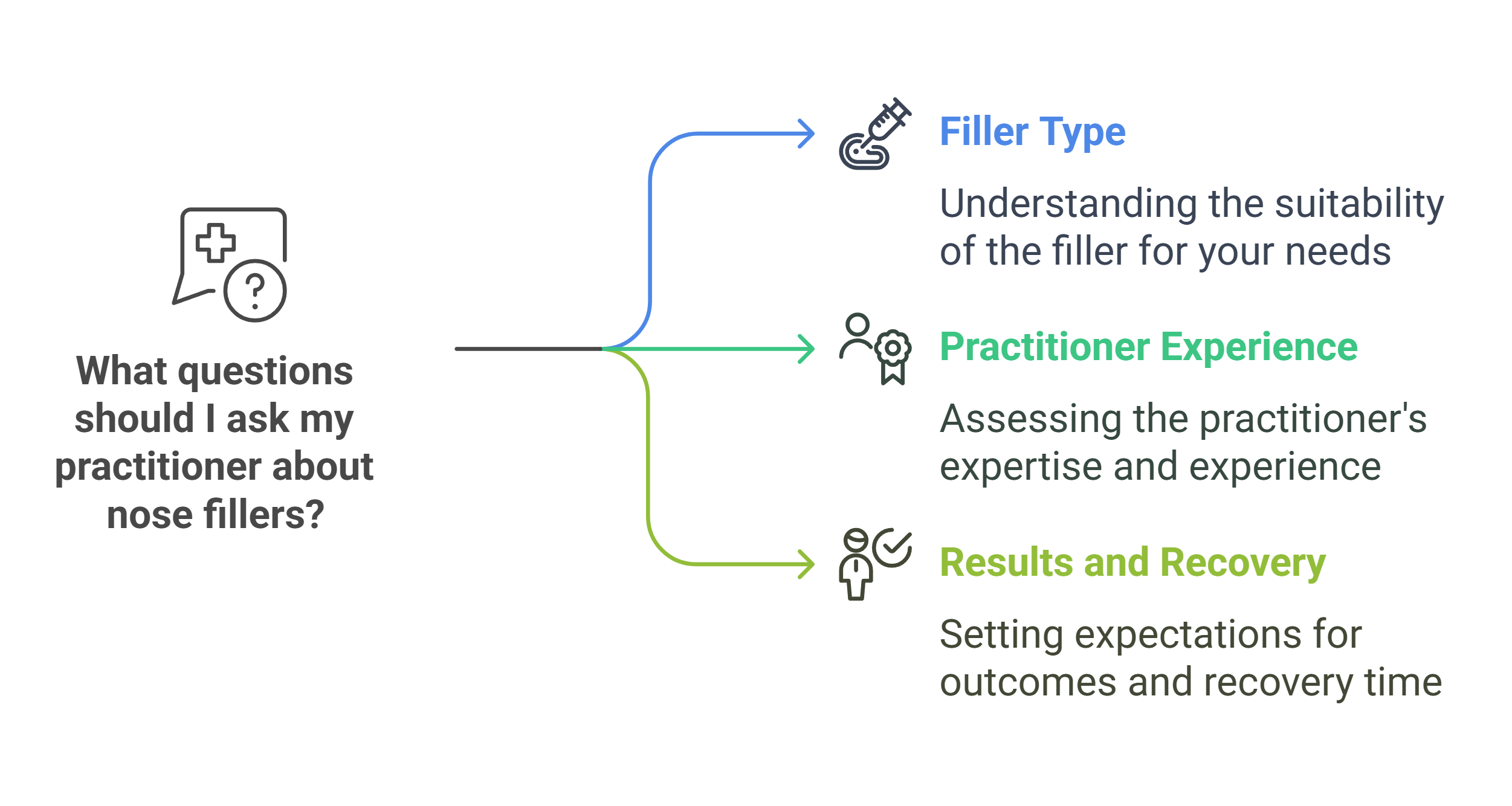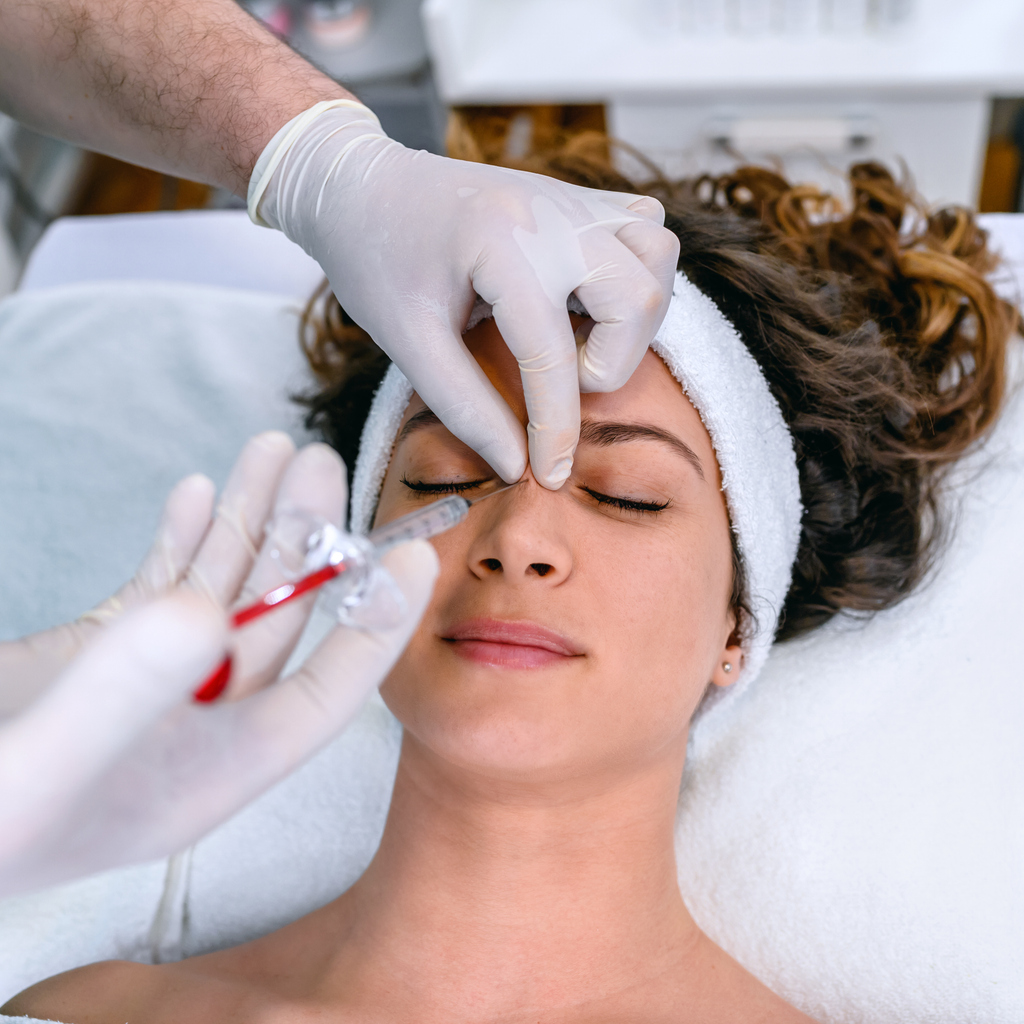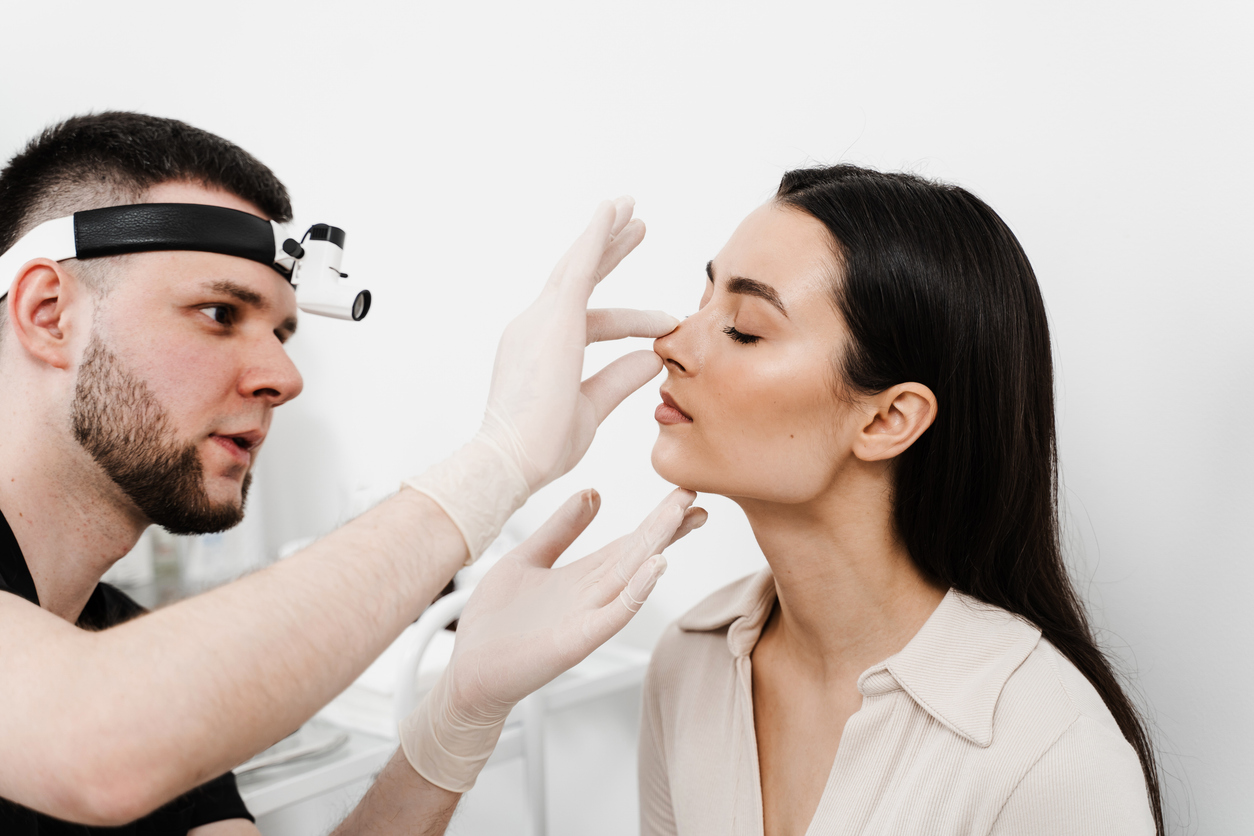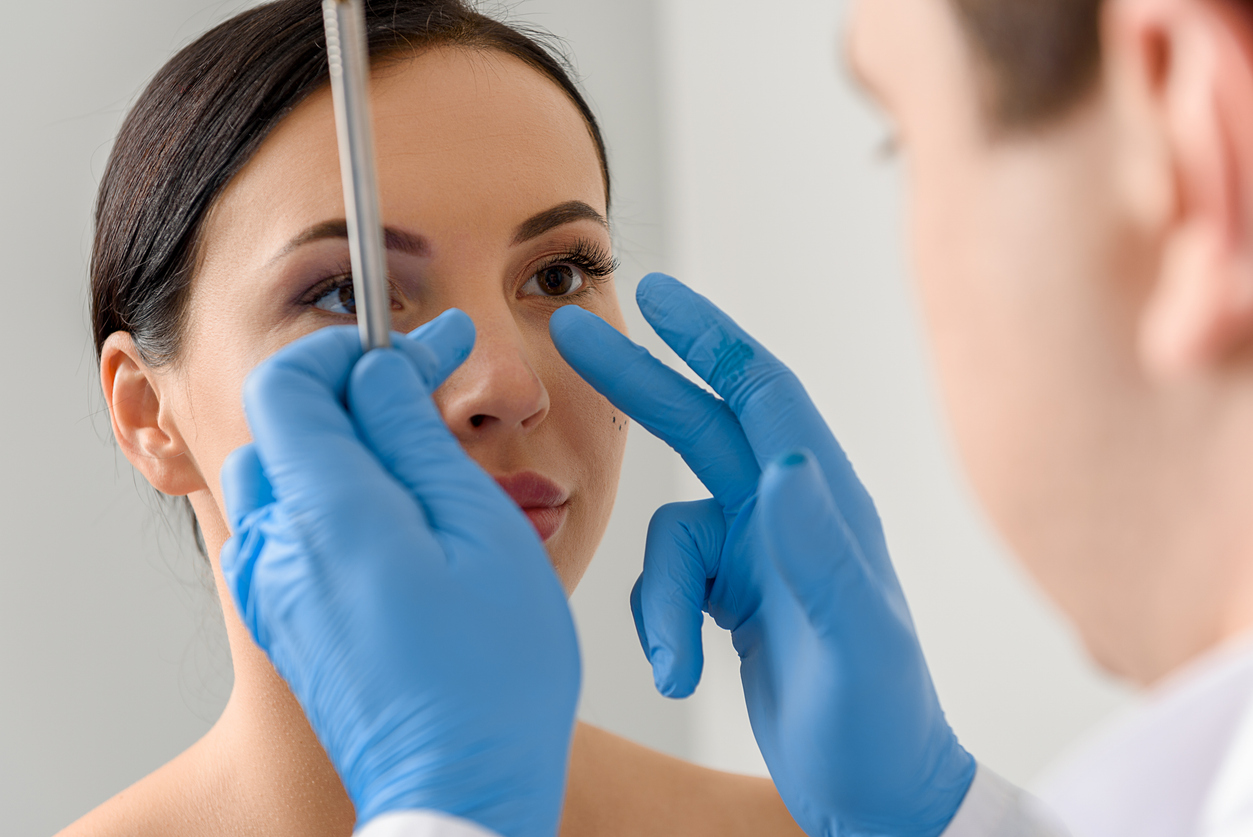Thinking about changing the shape of your nose but not ready for surgery? Nose filler is the answer. It’s a non-surgical treatment that uses dermal fillers to tweak the nose’s appearance. It’s quick, relatively simple, and comes with minimal downtime. But, like any procedure, it has its pros and cons. Let’s break it down so you can decide if it’s right for you.
Key Takeaways
- Nose filler is a non-surgical way to reshape or enhance the nose using injectable fillers.
- The procedure is quick, with minimal recovery time, and results are visible almost instantly.
- Common benefits include being non-invasive, reversible, and more affordable compared to surgery.
- Potential risks include swelling, bruising, and rare complications like vascular issues.
- Choosing a qualified practitioner is essential to minimise risks and ensure a good outcome.
Understanding Nose Filler and Its Applications
What Is Nose Filler?
Nose filler, also known as non-surgical rhinoplasty, involves using injectable dermal fillers to reshape and refine the appearance of the nose. These fillers, often made from hyaluronic acid, are designed to add volume, smooth out irregularities, and enhance facial symmetry. Unlike surgical procedures, nose filler offers a temporary yet effective solution with minimal downtime.
How Does It Work?
The procedure begins with a consultation where the practitioner evaluates the patient’s goals and facial structure. During the treatment, small amounts of filler are carefully injected into specific areas of the nose using fine needles or cannulas.
This allows for precise adjustments, such as:
- Smoothing out bumps or dorsal humps.
- Adding volume to create a straighter bridge.
- Lifting the nasal tip for a more defined appearance.
- Correcting asymmetry or enhancing proportions.
The results are immediate, and the procedure typically takes less than an hour, making it a convenient option for those seeking subtle improvements.
Who Is an Ideal Candidate?
Nose filler is suitable for individuals looking to make aesthetic changes to their nose without committing to surgery. Ideal candidates include:
- Those who want to smooth out minor bumps or irregularities.
- People seeking to improve symmetry or proportions.
- Individuals looking for a non-permanent solution to trial changes before considering surgery.
However, it may not be suitable for those with significant structural issues or those seeking dramatic, permanent changes. A consultation with a qualified practitioner is essential to determine suitability.
Non-surgical rhinoplasty offers a quick and effective way to enhance your appearance, but it’s important to have realistic expectations and choose a skilled professional for the best results.
The Procedure: What to Expect During a Nose Filler Treatment

Initial Consultation and Assessment
Your journey begins with an in-depth consultation. During this session, the practitioner will evaluate your nose’s structure and discuss your goals. They’ll also review your medical history to ensure you’re a suitable candidate. This step is crucial for tailoring the treatment to your needs. Be open about your expectations and ask any questions you may have.
Step-by-Step Procedure Overview
- Preparation: The practitioner cleanses the area and applies a numbing cream to minimise discomfort. This ensures a more comfortable experience.
- Marking and Planning: The practitioner marks specific injection points on your nose, based on the agreed treatment plan.
- Injection: Using a fine needle or cannula, the filler is carefully injected into targeted areas. The process typically takes 15–30 minutes.
- Shaping: The practitioner gently moulds the filler to achieve the desired contour.
Most patients find the procedure to be quick and relatively painless, with only a slight pressure or pinching sensation.
Post-Treatment Care and Recovery
After the treatment, you may notice minor swelling or redness, which usually subsides within a few days. To ensure optimal results, follow these guidelines:
- Avoid touching or applying pressure to your nose for 24 hours.
- Skip strenuous activities and avoid excessive sun exposure for a couple of days.
- Keep your head elevated while resting to reduce swelling.
Recovery is typically smooth, allowing you to return to your routine almost immediately.
By adhering to the aftercare instructions, you’ll maximise the longevity of your results and reduce the risk of complications.
Benefits of Choosing Nose Filler Over Surgery
Non-Invasive and Minimal Downtime
One of the most appealing aspects of nose filler treatments is their non-invasive nature. Unlike surgical rhinoplasty, which involves incisions and significant healing time, nose filler procedures require only a few precise injections.
This means you can return to your daily routine almost immediately. Most people experience mild swelling or redness, which typically subsides within a couple of days. For busy individuals, this minimal downtime is a game-changer.
Reversible and Adjustable Results
Nose fillers provide a level of flexibility that surgery simply cannot match. If you’re not entirely satisfied with the outcome, adjustments can be made during follow-up appointments. Additionally, most fillers, such as those made with hyaluronic acid, are reversible. This gives you peace of mind knowing that the results aren’t permanent and can be tailored to your preferences.
Cost-Effectiveness Compared to Surgery
Surgical rhinoplasty can be a significant financial commitment, often involving hospital fees, anaesthesia, and extended recovery periods. In contrast, affordable nose filler treatments are budget-friendly to anyone who wants this process.
While the exact cost depends on the type and amount of filler used, it’s generally a fraction of the price of surgery. This makes it an accessible option for those looking to enhance their appearance without breaking the bank.
For anyone seeking subtle yet impactful changes to their nose, fillers offer a practical and flexible solution without the need for surgery. It’s a modern approach to achieving aesthetic goals with less risk and commitment.
Potential Risks and How to Minimise Them
Common Side Effects
Nose filler treatments are generally safe, but mild side effects can occur. These may include:
- Redness or swelling at the injection site
- Minor bruising
- Tenderness or discomfort in the treated area
These reactions are typically short-lived, resolving within a few days. Using ice packs and following aftercare instructions can help reduce these symptoms.
Rare but Serious Complications
While rare, more serious risks exist. These include:
- Vascular complications, such as occlusion, which can lead to tissue damage
- Infection at the injection site
- Allergic reactions to the filler material
An important note: Blindness is an extremely rare but severe complication that underscores the need for a skilled practitioner. Always choose someone with a deep understanding of facial anatomy.
| Complication Type | Frequency | Prevention Strategy |
|---|---|---|
| Infection | Rare | Use sterile equipment and maintain hygiene |
| Skin Necrosis | Very rare | Correct injection techniques |
| Blindness | Extremely rare | Avoid high-risk injection zones |
Importance of Choosing a Qualified Practitioner
The best way to minimise risks is to select an experienced and qualified practitioner. Look for:
- Proper medical credentials and certifications.
- A strong track record in facial aesthetics.
- A clean, hygienic clinic environment.
Open communication with your practitioner is crucial. Share your medical history and ask questions about the procedure to ensure it’s tailored to your needs.
By taking these precautions, you can enjoy the benefits of nose filler with peace of mind.
Preparing for Your Nose Filler Appointment
Pre-Treatment Guidelines
Before your appointment, there are a few steps you can take to prepare both physically and mentally. These small actions can make a big difference in the outcome of your treatment:
- Avoid alcohol and blood-thinning medications like aspirin or ibuprofen for at least 48 hours before your treatment. This helps reduce the risk of bruising.
- Stay hydrated and eat a light meal before your appointment. Low blood sugar can make you feel faint during the procedure.
- Clean your face thoroughly on the day of your appointment, avoiding heavy makeup or skincare products.

Setting Realistic Expectations
It’s important to go into your appointment with a clear understanding of what nose fillers can and cannot achieve. While they can enhance the shape and contour of your nose, they won’t replace surgical results.
Temporary fillers are a great way to test out a new look before committing to something permanent. Remember, the goal is subtle improvement, not perfection.
Feeling a little nervous is normal, but being informed and well-prepared can make the process smoother and more comfortable.
What Nose Filler Cannot Achieve
While nose filler is a fantastic option for reshaping and contouring, it does have its limits. It cannot make a nose smaller, as the procedure involves adding volume rather than removing it.
Similarly, functional issues like breathing problems or structural deformities cannot be addressed with fillers. For these concerns, surgical rhinoplasty remains the gold standard.
Temporary Nature of Results
Unlike surgery, nose filler is not a permanent solution. The effects typically last anywhere from 6 months to 18 months, depending on the type of filler used and individual factors like metabolism. While this temporary nature is great for those wanting to “test out” a new look, it does mean regular maintenance appointments are required to sustain the results.
| Feature | Nose Filler | Surgical Rhinoplasty |
|---|---|---|
| Longevity | 6-18 months | Permanent |
| Invasiveness | Non-invasive | Invasive |
| Cost | Lower upfront cost | Higher upfront cost |
When Surgery Might Be a Better Option
There are cases where fillers simply won’t deliver the desired outcome. If you’re looking for a dramatic reduction in nose size, permanent changes, or correction of functional issues, surgery might be the better route. Additionally, if repeated filler treatments are needed over many years, the cumulative cost could eventually outweigh that of a one-time surgical procedure.
Nose filler is an excellent choice for many, but understanding its limitations ensures you can make the best decision for your goals and needs. Always consult with a qualified practitioner to explore all your options.
Maintaining Your Results: Aftercare Tips
Dos and Don’ts Post-Treatment
After your nose filler treatment, taking care of the area is essential to ensure the best possible results. Here are a few things to keep in mind:
- Do keep your face clean and protected. Gently cleanse your skin and apply a moisturiser daily to maintain overall skin health.
- Don’t expose the treated area to excessive heat or sun. Use a high-SPF sunscreen to protect your skin and the filler.
- Do avoid touching or massaging your nose unless instructed by your practitioner. This helps prevent the filler from shifting.
Signs You May Need a Touch-Up
While nose filler results are typically long-lasting, there are times when a touch-up might be necessary. Look out for:
- A gradual return of your nose’s original shape as the filler dissolves.
- Minor asymmetry or unevenness that wasn’t apparent immediately after the treatment.
- A desire for further refinement or enhancement of your results.
How to Prolong the Effects of Nose Filler
To make the most of your treatment and enjoy your results for as long as possible, consider these tips:
- Stick to a consistent skincare routine that includes hydrating products. Well-moisturised skin can help maintain the filler’s appearance.
- Avoid habits like smoking, which can break down the filler more quickly.
- Schedule periodic maintenance appointments with your practitioner to keep your results fresh and balanced.
Taking small steps in your aftercare routine can make a big difference in how long your results last. By being mindful of these practises, you can enjoy the benefits of your nose filler for months to come.
Conclusion
Nose filler is a non-surgical and minimally invasive option for those looking to enhance the shape of their nose without committing to permanent surgery. With quick results, minimal downtime, and reversible options, it offers an appealing solution for subtle refinements.
However, as with any cosmetic procedure, there are potential risks, including swelling, bruising, and rare but serious complications. To ensure the best results, it’s crucial to choose a qualified and experienced injector. If you’re considering nose filler, consult with a professional to determine if it’s the right choice for you.
Frequently Asked Questions
What exactly is a nose filler?
Nose filler is a non-surgical treatment using injectables, like hyaluronic acid, to reshape or enhance the nose’s appearance. It’s often chosen to smooth bumps, lift the tip, or improve symmetry.
How long do the results of nose filler last?
The effects typically last between 6 months to 18 months, depending on the type of filler used and your body’s natural metabolism.
Is the nose filler procedure painful?
Most people find the procedure only mildly uncomfortable. Numbing creams or local anaesthetics are usually applied to minimise any discomfort.
Are there risks associated with nose fillers?
Yes, common side effects include swelling, redness, and bruising. Rare complications, such as filler entering a blood vessel, can occur. Choosing a skilled practitioner reduces these risks.
Can I reverse the effects of a nose filler?
Yes, if hyaluronic acid fillers are used, they can be dissolved with an enzyme called hyaluronidase if you’re unhappy with the results.
Who is a good candidate for nose filler?
Ideal candidates are those looking for minor adjustments to their nose shape without surgery. It’s not suitable for those needing significant structural changes or solutions to breathing issues.







